M37 Open Cluster
Click image for full size version
Feb 23, 2016
M37 is one of my favourite open clusters. It is one of three bright open clusters in Auriga. The others are M36 and M38, both of which I imaged in 2015. All three are great in binoculars or a small telescope, and can be seen with the naked eye from a dark site. Although all three are in Messier’s famous catalogue, they were first recorded by an Italian astronomer, Giovanni Battista Hodierna before 1654. More than 500 stars belong to this triangle-shaped cluster, and it has a mass more than 1,500 times that of the Sun. It’s several hundred million years old, and is about 4,500 light years away. From its apparent size in the sky and this distance estimate, the cluster has been estimated to span 20-25 light years.
This image shows many more stars, better colours and better detail than my 2010 image which was captured with a smaller telescope and a different camera (6″ f/8 refractor and QSI583wsg camera on MI-250 mount).
Tekkies:
SBIG STL-11000M camera, Baader RGB filters, 10″ f/6.8 ASA astrograph, Paramount MX. Guided with STL-11000’s internal guider. Focused with FocusMax. Acquisition, guiding and calibration with MaximDL. CosmeticCorrection, Image registration and all processing in PixInsight. Shot from my SkyShed in Guelph, Ontario. Full moon. Average transparency and good seeing throughout.
9x5m R, 11x5m G, and 9x5m B, all unbinned frames (total=2hr25m).
RGB
Creation and cleanup: R, G and B masters were combined with ChannelCombination, and the resulting RGB image was cropped and processed with DBE, followed by ColorCalibration.
Linear Noise Reduction: MultiscaleLinearTransform was used to reduce noise in the background areas of the RGB image. Layer settings for threshold and strength: Layer 1: 3.0, 0.5 Layer 2: 2.0, 0.39 Layer 3: 1.0, 0.25 Layer 4: 0.5, 0.1. A mask was used to protect high signal areas.
Stretching: HistogramTransformation was applied to make a pleasing yet bright RGB image.
Synthetic Luminance
Creation and cleanup: The R,G and B masters were combined using the ImageIntegration tool (average, additive with scaling, noise evaluation, iterative K-sigma / biweight midvariance, no pixel rejection) to create the SynthL channel. The image was cropped to match the RGB and DBE was applied.
Deconvolution: A copy of SynthL was stretched to use as a deconvolution mask. A star mask was made from unstretched SynthL to use as a local deringing support. Deconvolution was applied (100 iterations, regularized Richardson-Lucy, external PSF made using DynamicPSF tool with about 20 stars; local deringing at 70% and global dark deringing at 0.03).
Linear Noise Reduction: MultiscaleLinearTransform was applied to reduce the noise. Layer settings for threshold and strength: Layer 1: 3.0, 0.6 Layer 2: 2.0, 0.5 Layer 3: 1.0, 0.4 Layer 4: 0.5, 0.15
Stretching: HistogramTransformation was applied to make an image with similar brightness to the RGB image. TGVDenoise was applied and the image was re-stretched to reset the black point.
Combining SynthL with RGB:
The luminance channel of the RGB image was extracted, processed and then added back into the RGB image as follows:
1. Set RGB channels equal using RGBWorkingSpace.
2. Extract luminance from the RGB image.
3. Apply LinearFit using SynthL as the reference.
4. Use ChannelCombination in Lab mode to replace the RGB’s luminance with the fitted luminance from step 2.
5. LRGBCombine was then used to make a SynthLRGB image.
Final Processing
Contrast, brightness and colour saturation were adjusted in several iterations with the Curves tool, with separate adjustments for background and stars using a mask.
Image scale is about 1.1 arcsec per pixel for this camera / telescope combination.

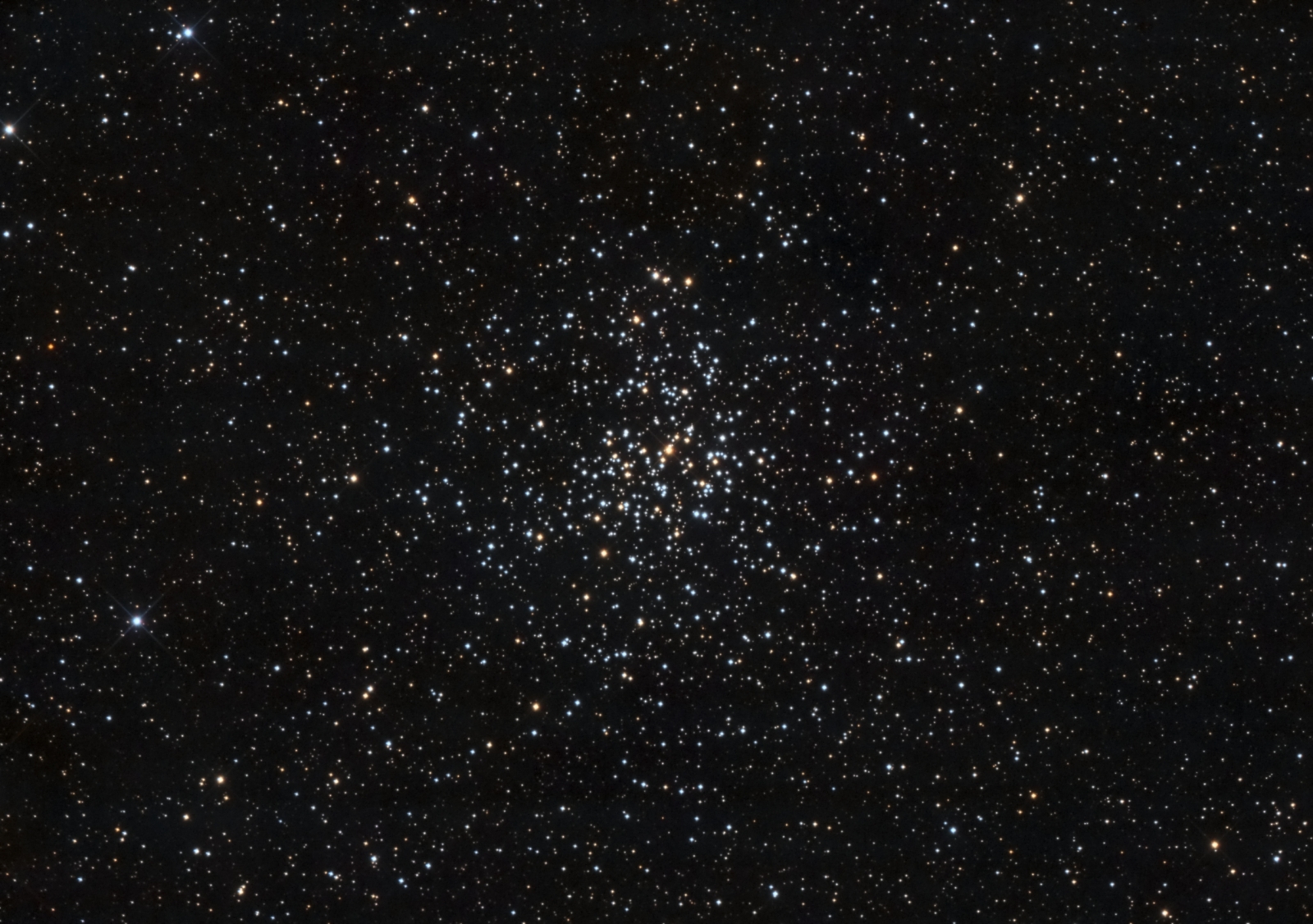
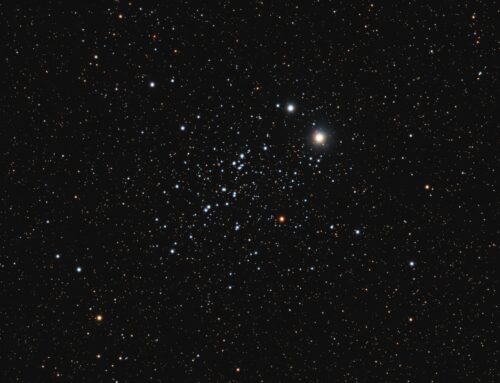
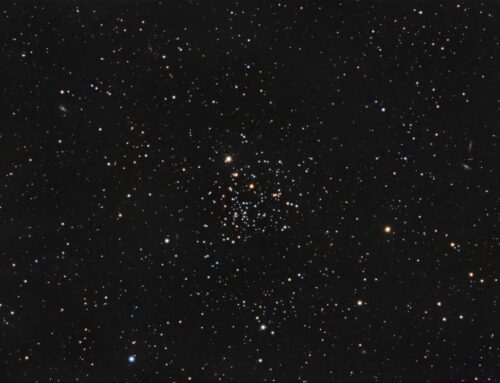

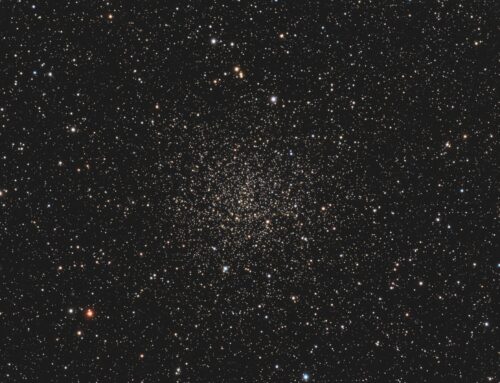
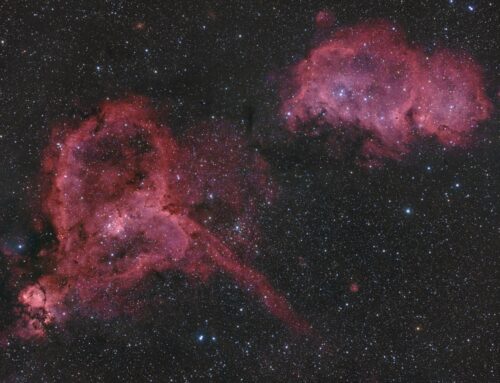
Leave A Comment